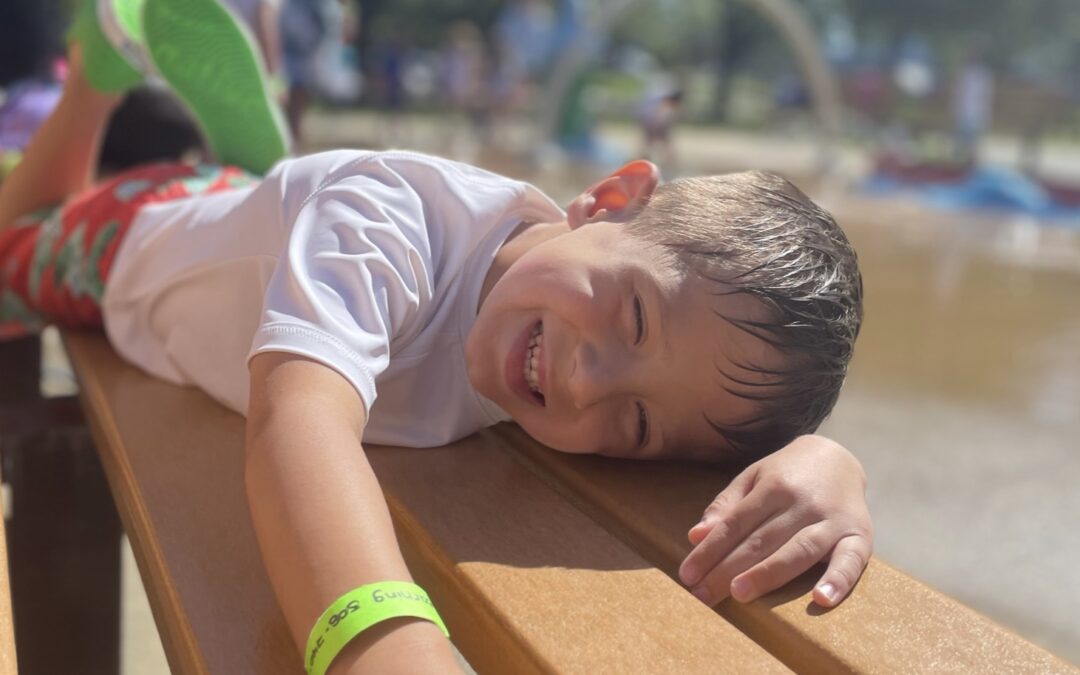“The belief that children are capable individuals who have the potential to become socially and emotionally competent is the foundation for successfully guiding children towards positive behaviors.”
What You’ll Learn
- What are positive behavior strategies?
- How do positive behavior strategies help with challenging behaviors?
- What do positive behavior strategies look like at home?
When I first began writing this post, I titled it, “Preventing Challenging Behaviors: Strategies for Parents & Caregivers.” My plan was to give you all the tips and tricks on how to put an end to challenging behaviors once and for all! I quickly realized this would have been a contradiction to what I shared about challenging behaviors in my last blog post: “children engage in challenging behaviors during early childhood as a natural part of their development and as a way to communicate.” You can find this post, (Beyond) Challenging Behaviors: 9 Strategies for Parents & Caregivers here.
Here I was, telling you that challenging behaviors are developmentally appropriate and providing you with strategies to implement when they inevitably occur, while also arguing that they should and can be prevented. Yikes.
After some serious contemplation, I was able to create a much more appropriate title and direction for this piece. While I won’t be able to give you the secret to preventing challenging behaviors (because there isn’t one), I will provide you with some positive behavior strategies that can proactively reduce them.
↑ Positive Behaviors to ↓ Challenging Behaviors
If we expect children to choose positive behaviors, then we must also hold the expectation that we, as adults, use positive approaches. Positive behavior strategies are evidence-based approaches that can change and decrease children’s challenging behaviors. In addition, these strategies will help you identify calm and consistent ways to manage challenging behaviors, while offering your child the opportunity to develop self-regulation skills.
9 Strategies to Promote Positive Behavior
At SolBe, we believe that children are capable individuals and aim to promote children’s wellbeing, growth, and autonomy. This belief is the foundation for successfully guiding children towards positive behaviors. Through positive behavior strategies, we have been able to meet the social-emotional needs of our students and decrease the amount of challenging behaviors that occur in early childhood development. Here’s how you can do this at home:
| Strategies to promote positive behavior | Where to start |
| Create a safe, predictable, and positive environment | Make sure your child has plenty of space and stimulating items to play with. Organize these materials in a safe and accessible way. |
| Identify and display positive behavior expectations | With your child, co-create behavior expectations that are observable, positive, and understandable—try to limit these expectations to 3–5 statements! |
| Model behavior expectations | Use your own behavior to guide your child and remember to share your emotions and how you manage those in a safe, kind, and productive way. |
| Provide positive attention and opportunities for quality time between you and your child | Create play opportunities to build a close and loving relationship. During this play, catch those moments of positive behavior and offer verbal praise! |
| Keep instructions simple and positive | When giving instructions, remember to keep them short, clear, and age appropriate so your child can understand and remember them. |
| Prepare for challenging situations | Think about these situations in advance and plan around your child’s needs—offer a 5-minute heads up when changing activities or prepare a preferred snack for a long car ride. |
| Develop strategies to respond to challenging behaviors | Review our suggested strategies for managing challenging behaviors in the moment here! |
| Create intentional opportunities for your child to succeed | Give your child a simple chore or task they can do to help the family. Praising their behavior and effort will encourage them to continue. |
| Partner with your child’s educators | Identify the behavior expectations and language used to talk about behavior at your child’s school and determine whether these would also be appropriate for home. |
Empowering Takeaways
- Children are capable individuals
- Challenging behaviors are not preventable, but can be reduced
- Positive language and other intentional actions increases positive behavior
Be vibrant and keep thriving!
This article was last reviewed or updated on August 25, 2023.
References
Alter, P. J. & Conroy, M. A. (n.d.). Preventing challenging behavior in young children: Effective practices. Center for Evidence-Based Practice: Young Children with Challenging Behaviors. https://challengingbehavior.org/document/recommended-practices-preventing-challenging-behavior-in-young-children-effective-practices/
ChildCare Education Institute. (2022, November 24). How to deal with challenging behaviors in preschool. https://www.cceionline.com/how-to-deal-with-challenging-behaviors-in-preschool/
Child Mind Institute. (2022, April 14). Managing problem behaviors at home. https://childmind.org/article/managing-problem-behavior-at-home/
McCabe, L.A. & Frede, E.C. (2007, March 1). NIEER Policy Brief: Challenging behaviors and the role of preschool education. National Institute for Early Education Research.
Morin, A. (n.d.). Positive behavior strategies: A guide for teachers. Understood for All. https://www.understood.org/en/articles/what-are-positive-behavior-strategies
Raising Children Network, Australia. (2023, July 3). Encouraging positive behaviour: Tips. https://raisingchildren.net.au/toddlers/behaviour/encouraging-good-behaviour/good-behaviour-tips
Strain, P., Joseph, J., Hemmeter, M. L., Barton, E., & Fox L. (2017, January). Tips for responding to challenging behavior in young children. Pyramid Equity Project. https://challengingbehavior.org/docs/PEP_Tips-responding-challenging-behavior.pdf



